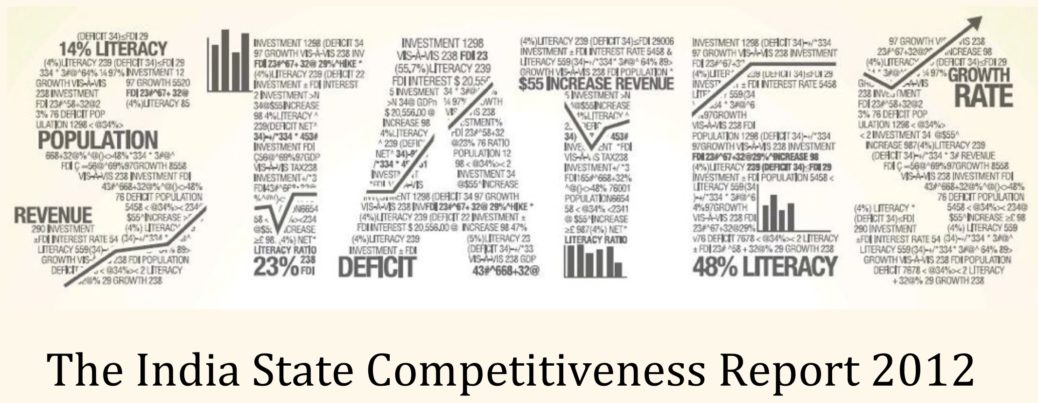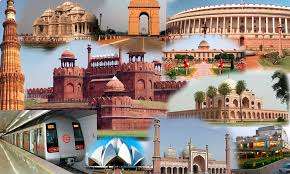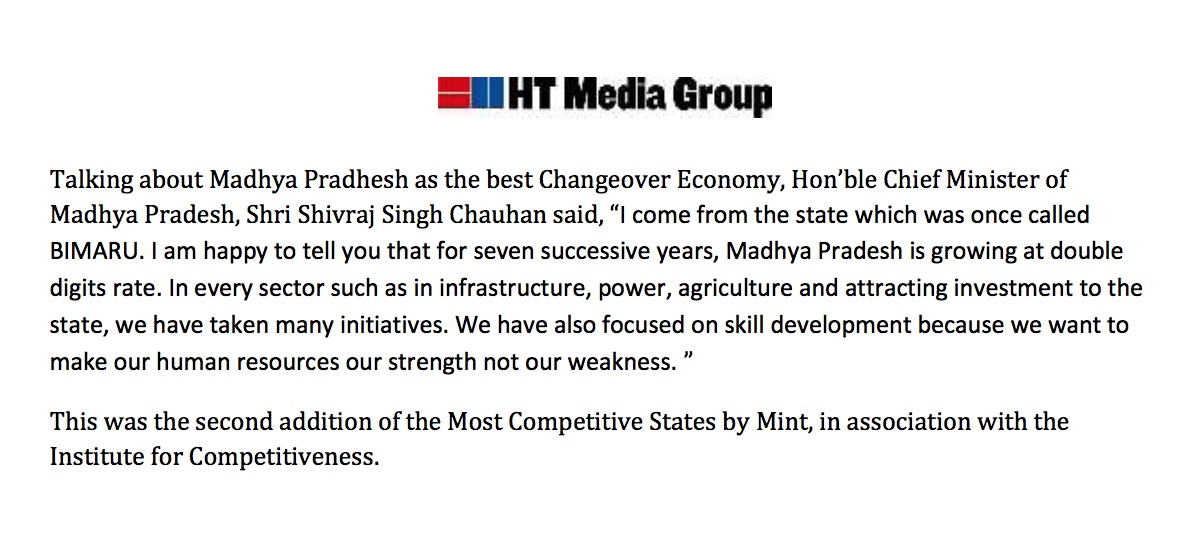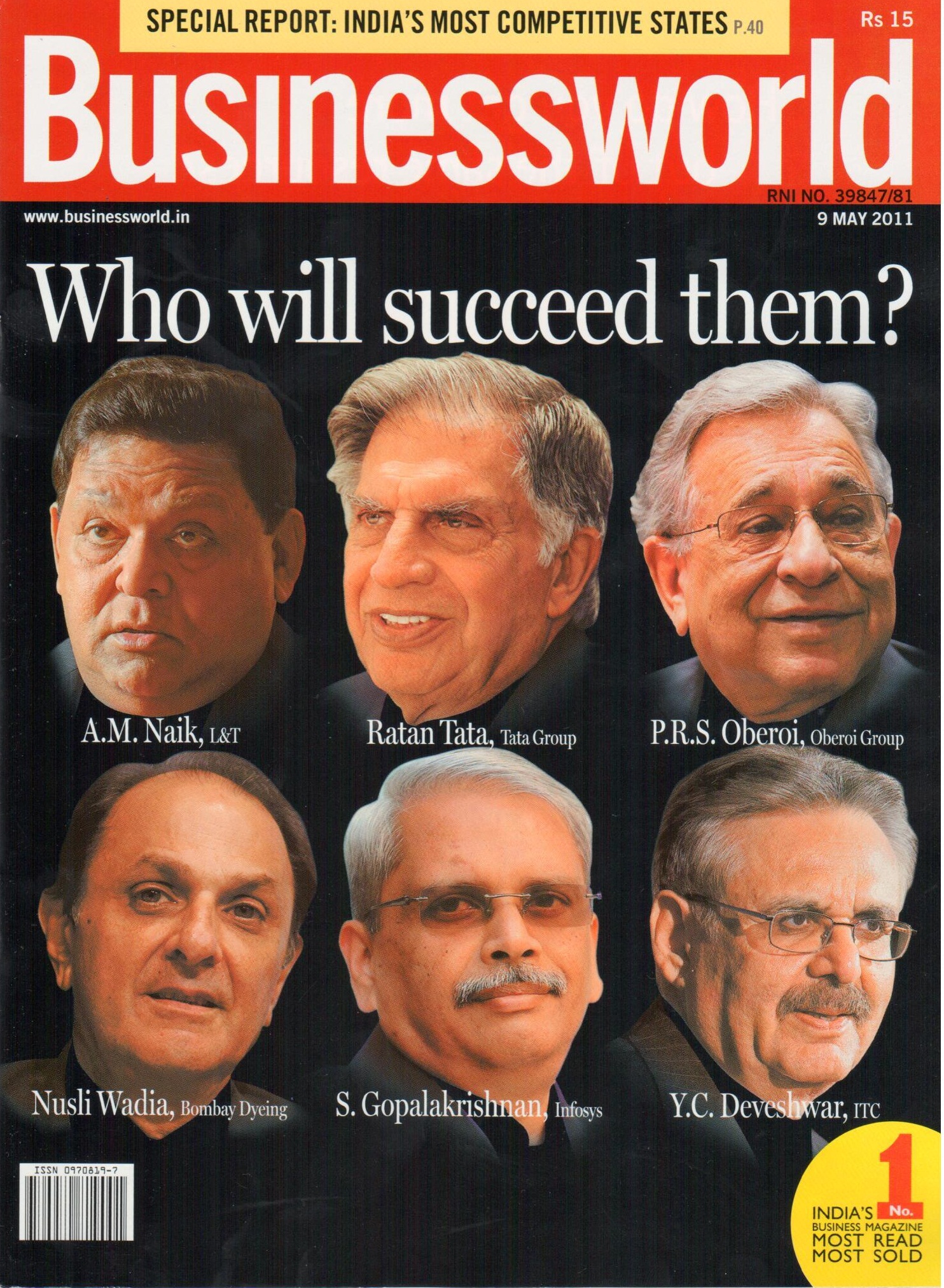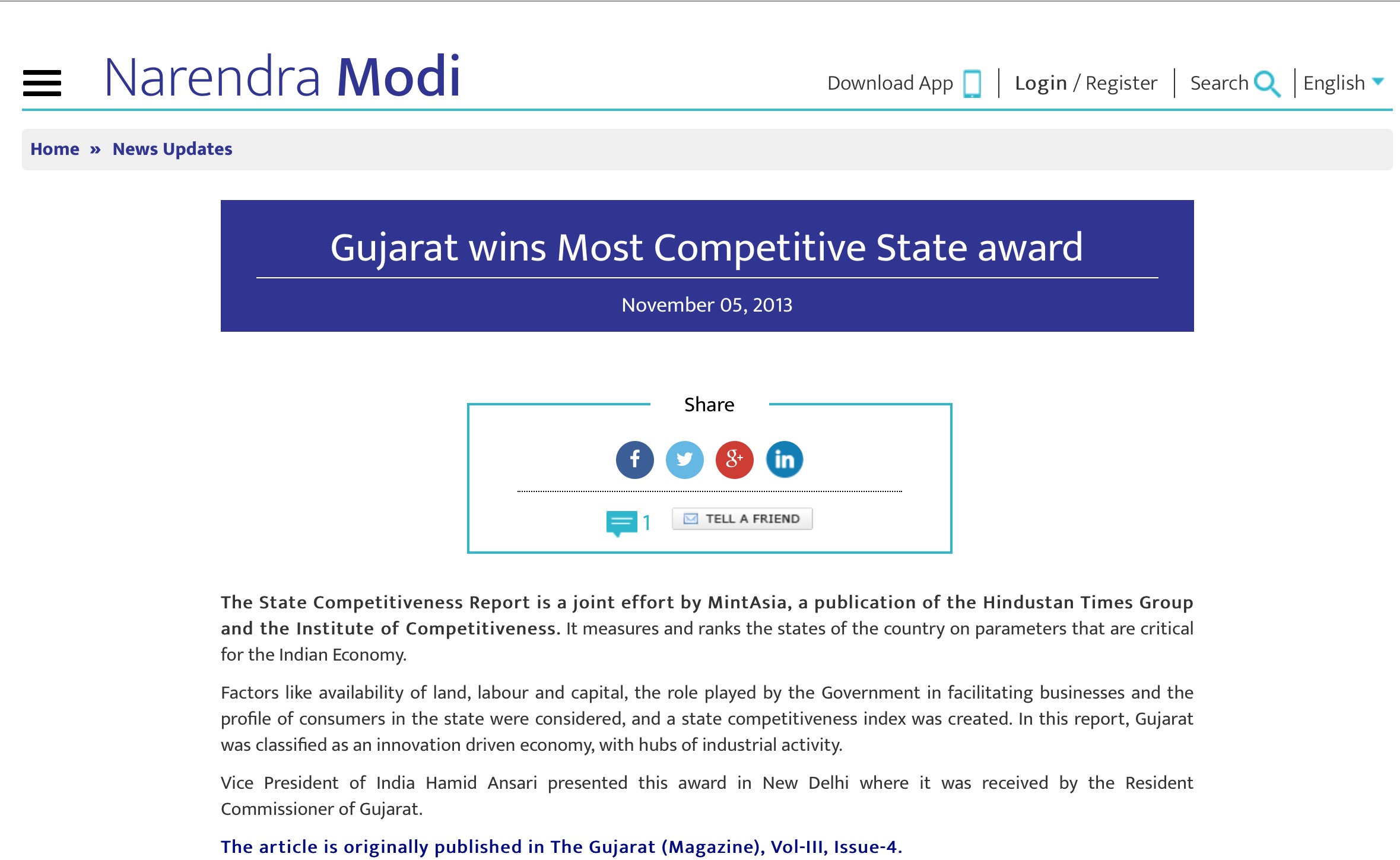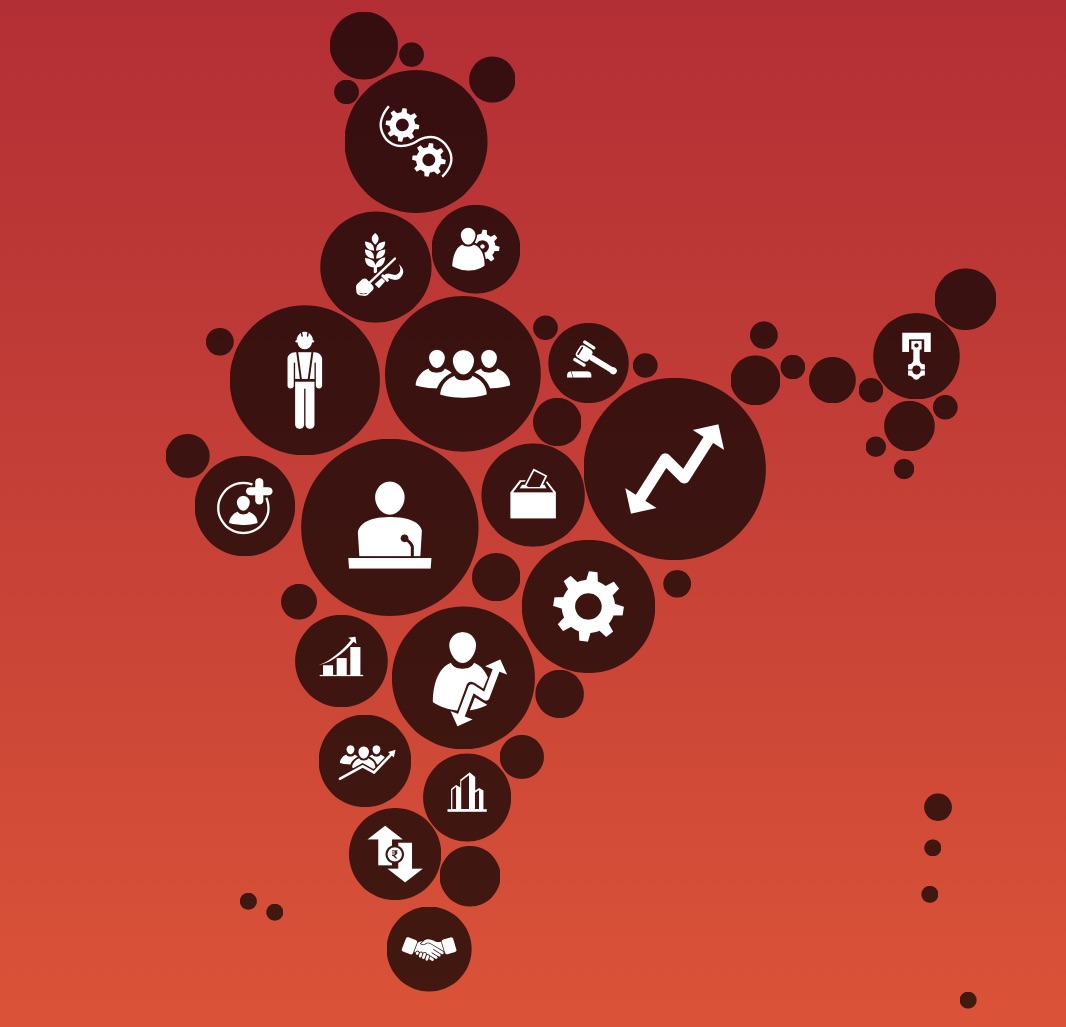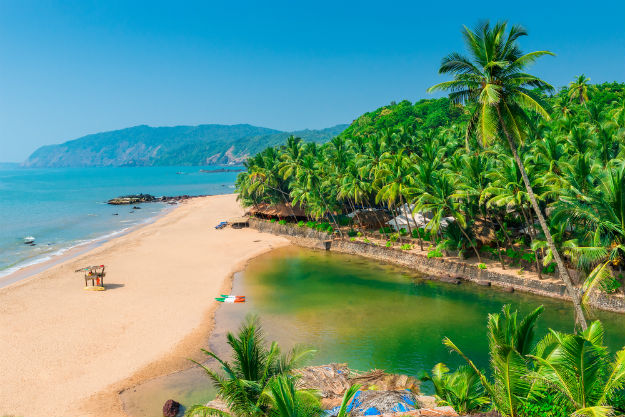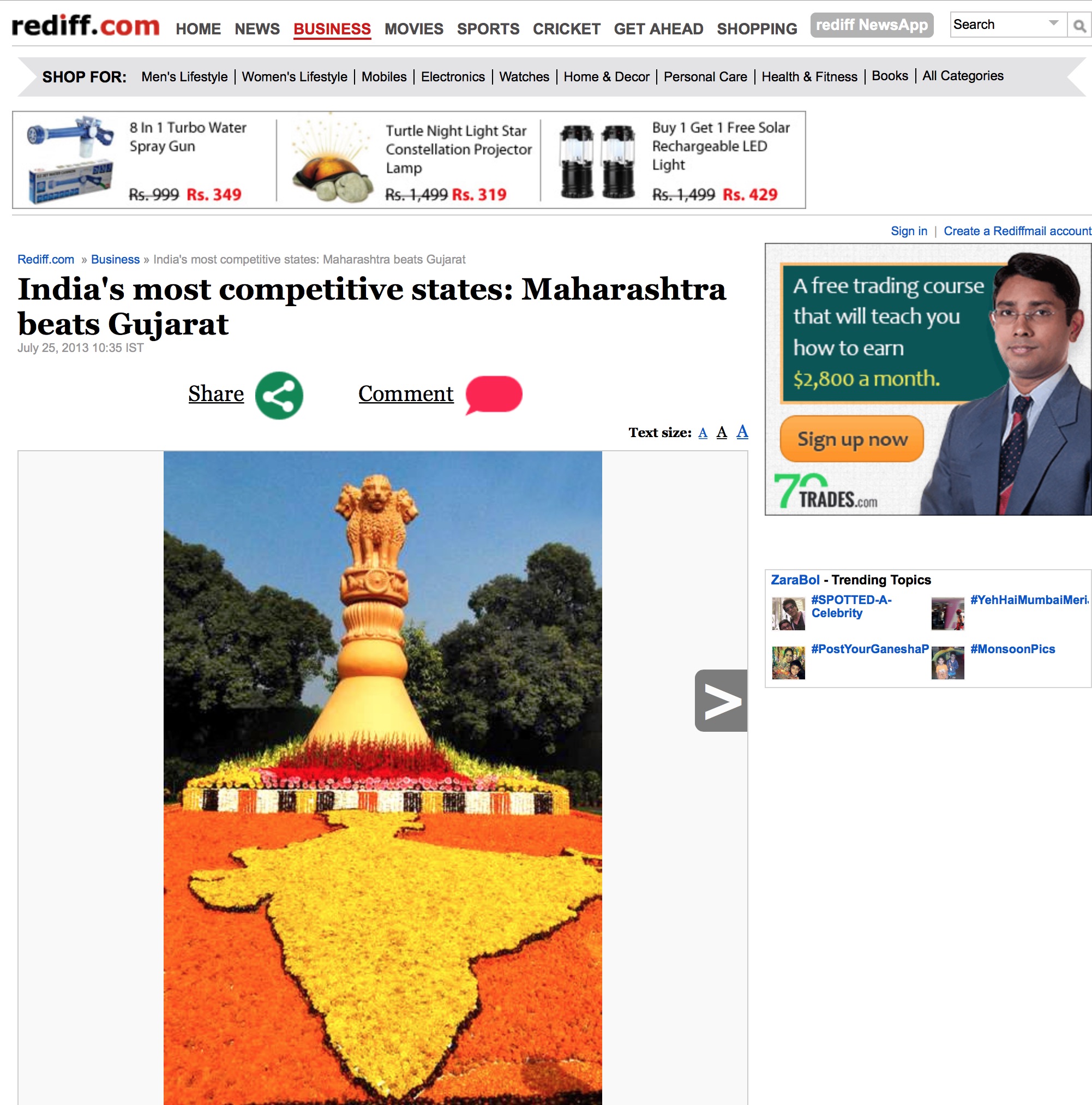India is a land of many paradoxes. On the one hand some of the richest men and some of greatest business families have emerged from India at different points in time. Conversely many people among its large population pool of 1.21 billion live amid widespread poverty and deprivation. Often what can be said about India the complete opposite can also be seen.
India is a conglomeration of 28 different states and 7 union territories that have their own set of realities. These states are both varied in terms of their factor endowments (Land, Labour and Capital) as well as their demand conditions (People buying varied goods and services). Key to growth in an emerging economy like India is the role that the governments as well as firms play to create a dynamic and powerful economic engine. These 4 are key elements for the growth and development to be equitable and sustainable. The State Competiveness Report 2012 measures and ranks states in India on various competitiveness dimensions that are critical for the Indian economy. These are the Demand Conditions, Factor Conditions, Context for Strategy and Supporting and related Industries.
The states are different both in their relative sizes (Maharashtra is by far the largest economy equivalent to the size of Singapore economy with a GDP of 180 Billion Dollars in 2009) while Goa is just 4 billion Dollars and equivalent to Malawi internationally. Some are growing very fast while others are growing relatively slowly. Apart from the GDP figures the states are also very varied in terms of demographics. Most of the country is very young (Maximum number of people in the 10 – 25 Age bracket), barring the two southern states of Kerala and Tamil Nadu. This is supposedly going to be a great advantage for India in the coming years. But in order to leverage this demographic dividend the states will have to formulate specific developmental policies like education for all, food security, energy security and world-class healthcare facilities. Due to a large number of people entering the labor force there will be a large consumer class that will be created and this is a big area of opportunity for both the domestic and the international players. Huge amount of infrastructure spending roughly of the order of 1 trillion dollars is expected in the Infrastructure sector in the country in the 12th plan. Needless to say only the government will not finance this. Public private partnerships (PPP) will be the model for dealing with the infrastructure deficit that the country presently faces.
The states are categorized according to the their level of development. There states at a basic level of development are termed as Factor Driven Economies. These have per capita GDP levels from are 0 to 400 USD. Bihar and Madhya Pradesh are the top performers in this category. Then there are the Changeover/ Evolving Economies. These have per capita GDP levels of 400-500 USD. This year Rajasthan (The biggest state of India in terms of area 3,42,239 square km) tops the ranking performing well on all the sub pillars of competitiveness. A large number of the Indian states fall in the Investment Driven Economies. These states have a per capita GDP from 500$ – $800 USD. The southern states of Andhra Pradesh and Karnataka have done well overall in this bracket. States at a moderately high level of development are termed as Transition Economies. These have per capita GDP levels in the bracket of 800-900 USD. Punjab and Tamil Nadu are overall the best performers in this category. Innovation Driven Economies are the engines of growth of India. These have high per capita income levels between 900-1300 USD. Haryana, Maharashtra and Gujarat perform well in this category. City-states are more of cities than states. The have extremely high levels of per capita GDP which is more than 1300 USD. Delhi and Goa are great performers in the city-states category.
The report specifically refrains from making cross category comparisons since it defeats the very purpose of categorization. This categorization is helpful to assess competitiveness relative to states with a similar level of development of the economy.
The report was covered by Mint on April 29, 2012.

